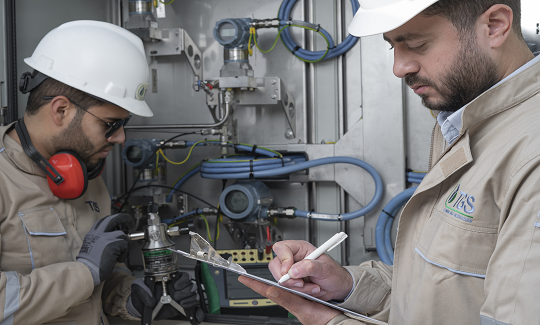Calibration and verification of measuring devices’ accuracy according to international standards:
Standard references are a must to get accurate readings on any device; hence, the importance of calibration appears by increasing production efficiency, extending the life of equipment, delivering a high return on investment (ROI), and raising the efficiency of the safety system. The costs of not calibrating include increased production expenses due to manufacturing errors, acceptance of non-compliant products, and wrongful rejection of compliant products, in addition to frequent plant shutdowns and faulty research and development resulting from inaccurate information and calibration.
In measurement technology and metrology, calibration is the comparison of measurement values delivered by a device under test with those of a calibration standard of known accuracy as sensors always tend to give offset values due to slightly higher or lower curves than the ideal linear output. This can be corrected with various calibration methods such as single-point, two-point, and multi-point methodology.
We at TGS follow the standards set by the National Institute of Standards and Technology (NIST) using a wide range of the latest technology devices set according to the NIST standards to guarantee the most accurate measurements for our clients.
